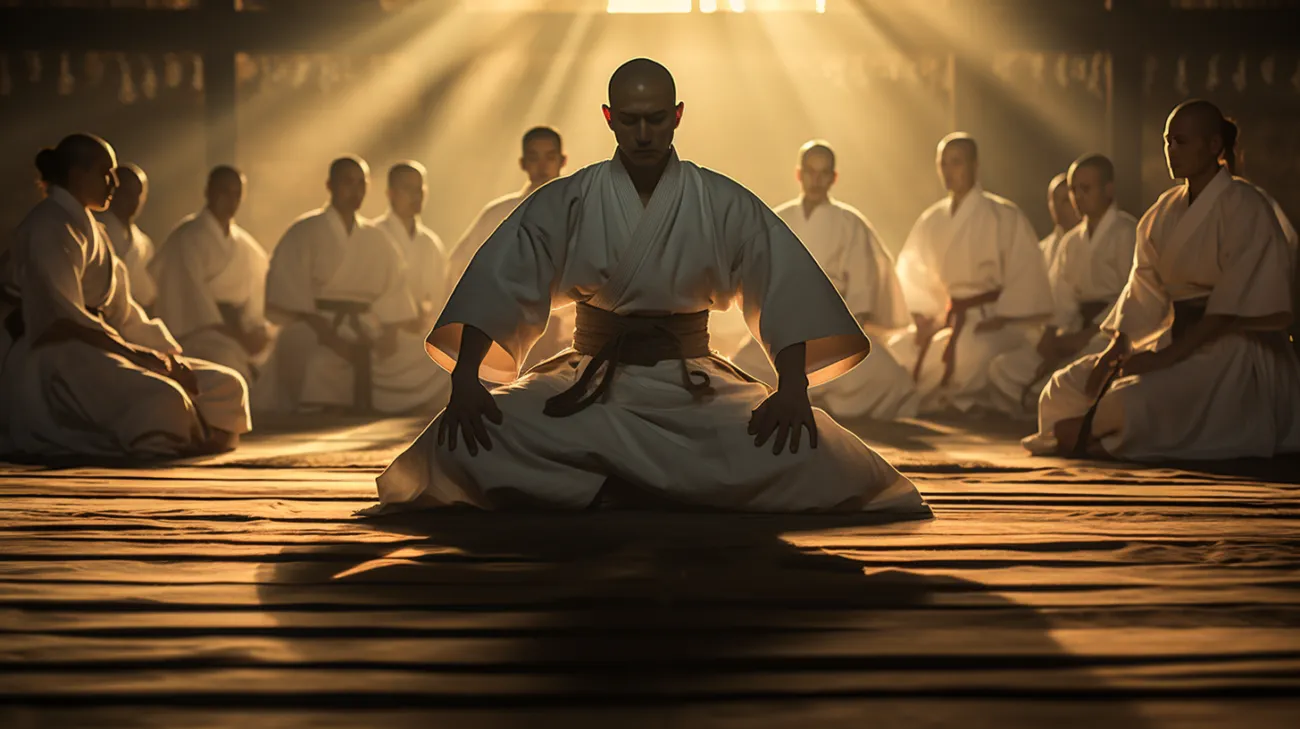Have you ever wondered about the martial art that emphasizes harmony and blending with an opponent? It’s called Aikido, a Japanese art form which is practiced in approximately 140 countries worldwide.
This blog post will delve into the rich history, unique elements, and spiritual nuances of Aikido to show how it serves as both a physical discipline and a way of life. Get ready to journey into the world of “the way of harmonious spirit”.
Key Takeaways
- Aikido is a Japanese martial art that emphasizes harmony and blending with an opponent. It combines physical techniques with spiritual and philosophical principles.
- The history of Aikido dates back to the early 20th century, where Morihei Ueshiba developed the art form by synthesizing his knowledge of martial studies, philosophy, and religious beliefs.
- Aikido training incorporates unique aspects such as the roles of uke (attacker) and tori (defender), various initial attacks and basic techniques, weapons implementation, training against multiple attackers in randori, centering/grounding, awareness/timing skills practice, partner variation practice, and integration of traditional Japanese weapons.
- The spiritual component of Aikido focuses on cultivating “ki,” or life energy. Practitioners learn to relax, center themselves mentally and physically while developing heightened awareness. Ki training extends beyond physical movements into mental focus through meditation exercises and mindful breathing techniques.
Understanding Aikido: An Overview
Aikido, a modern Japanese martial art developed by Morihei Ueshiba, is practiced in approximately 140 countries worldwide.
The Etymology and Basic Philosophy
Morihei Ueshiba, a revered figure in the world of martial arts, developed Aikido – a modern Japanese martial art. The term “Aikido” finds its roots in the 20th century and embodies three essential elements; ‘Ai’ meaning harmony or unity, ‘Ki,’ signifying spirit or energy and ‘Do,’ representing path or way.
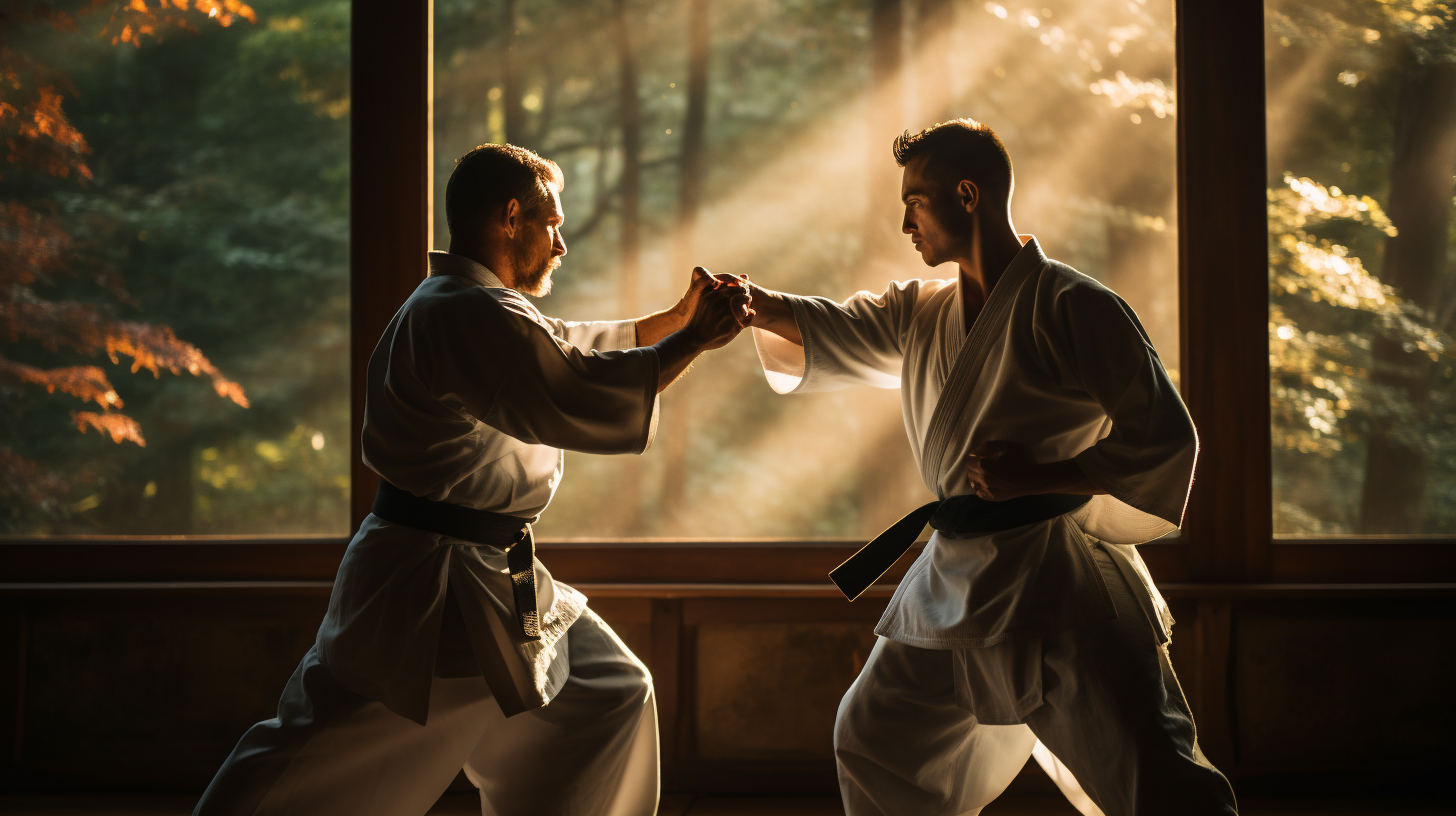
Together, they form “The Way of Harmony with Spirit,” encapsulating Aikido’s basic philosophy. Outshining mere physical prowess, Aikido embraces a convergence of spiritual and philosophical ideologies underlining non-violence and reconciliation.
This unique approach is an embodiment of Ueshiba’s martial studies influenced by his religious involvement with Ōmoto-kyō religion. His teachings advocate overcoming oneself rather than cultivating aggression—an ethos stepping away from violence to foster peace through self-development—imbue the heart of this traditional practice.
History and Initial Development
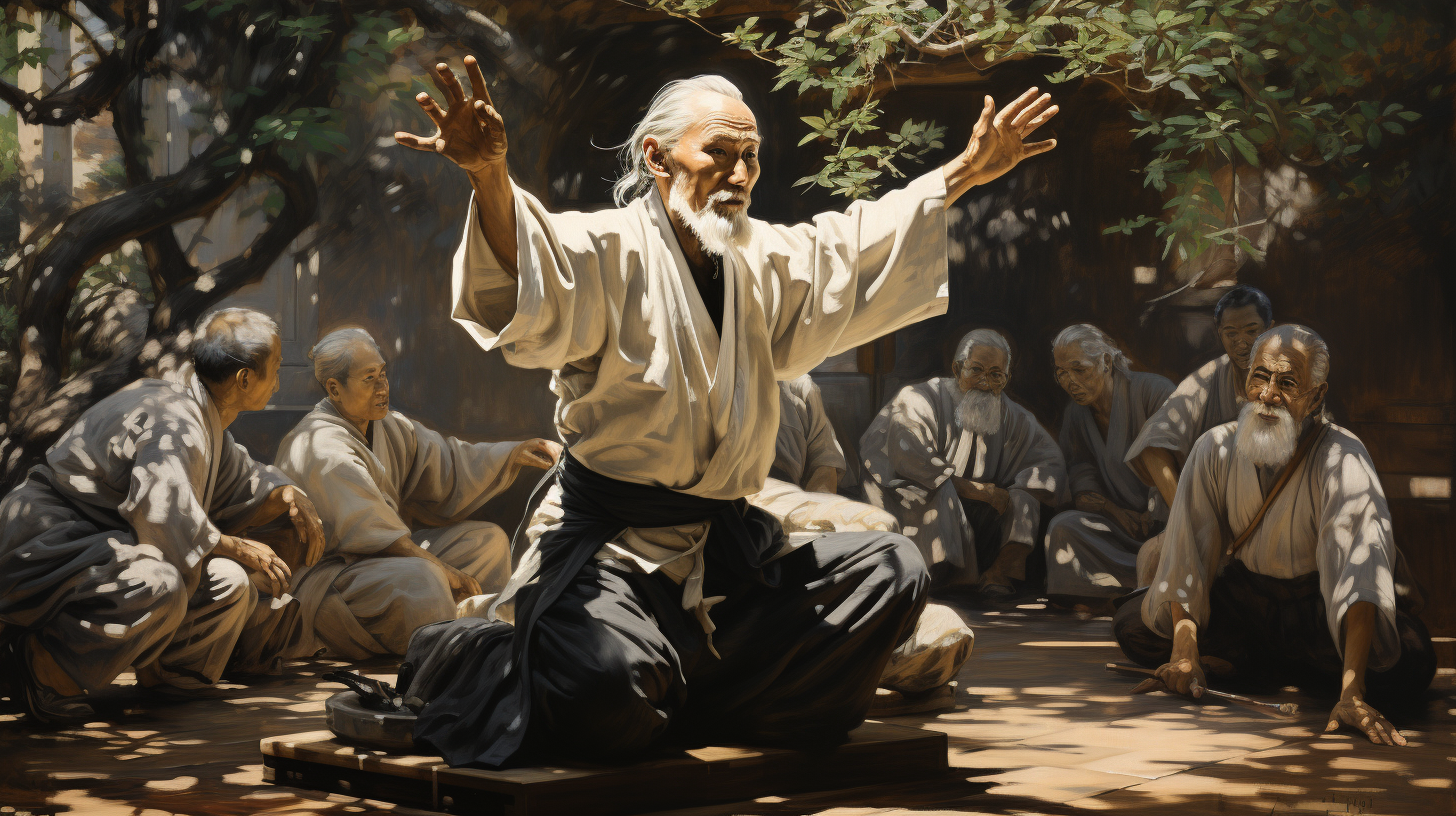
The inception of Aikido traces back to Japan’s early 20th century, particularly attributed to the martial arts brilliance of Morihei Ueshiba. Drawing a roadmap for its creation, Ueshiba meticulously synthesized his extensive knowledge in martial studies with enriching threads from philosophy and folded them into spaces with his profound religious beliefs.
Even though the term “Aikido” officially emerged later during this century, it was constantly being shaped under Ueshiba’s guidance with primary principles like entering, breathing control, triangular dimensions and turning movements.
He ingeniously combined throws and joint locks as key techniques used in Aikido while including a comprehensive weapons system involving bokken, tanto and jo. The fabric of Daitō-ryū Aiki-jūjutsu contributed heavily to its structure too.
One remarkable aspect that sets apart Aikido is Ueshiba’s vision for it – an art form aimed at self-defense whilst ensuring protection for attackers from injury, triumphantly overcoming oneself rather than breeding violence or aggressiveness.
International Dissemination and Independent Organizations
The global footprint of Aikido is remarkable, with its practice spanning around 140 countries worldwide. This widespread adoption was initiated in 1951 by Minoru Mochizuki, an early student of Morihei Ueshiba who visited France to introduce the world beyond Japan to this unique martial art form.
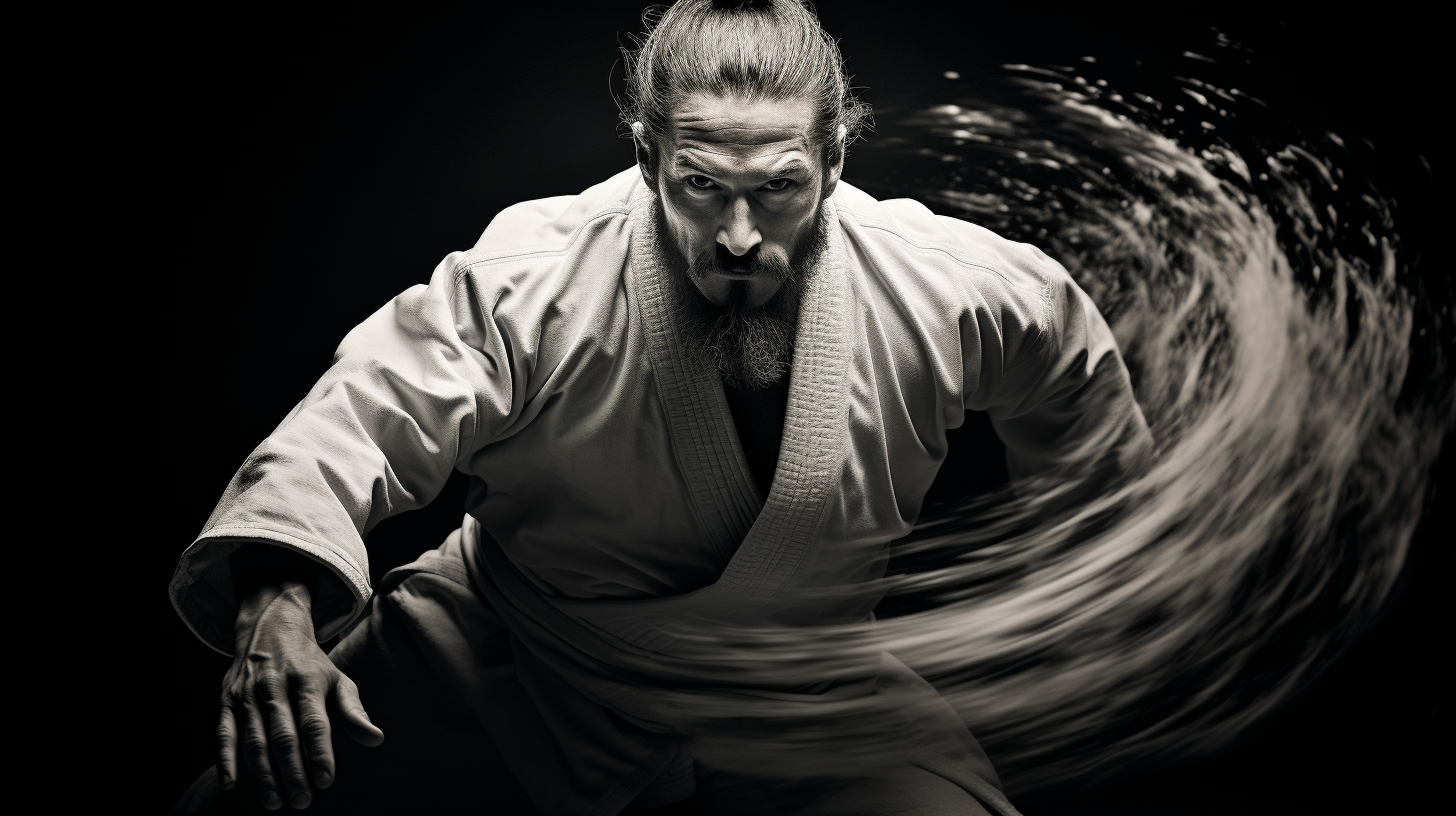
As a testament to its universal appeal and adaptability, numerous independent organizations dedicated to Aikido have sprung up over years across continents. These include notable ones like Yoshinkan Aikido and Shodokan Aikido that cater to diverse styles and philosophies within the broader scope of Aikido teachings.
Still commanding significant influence among these is the largest organization called the Aikikai Foundation, rooted deeply in tradition and continuing under the stewardship of Ueshiba’s descendants.
The Unique Aspects of Aikido Training
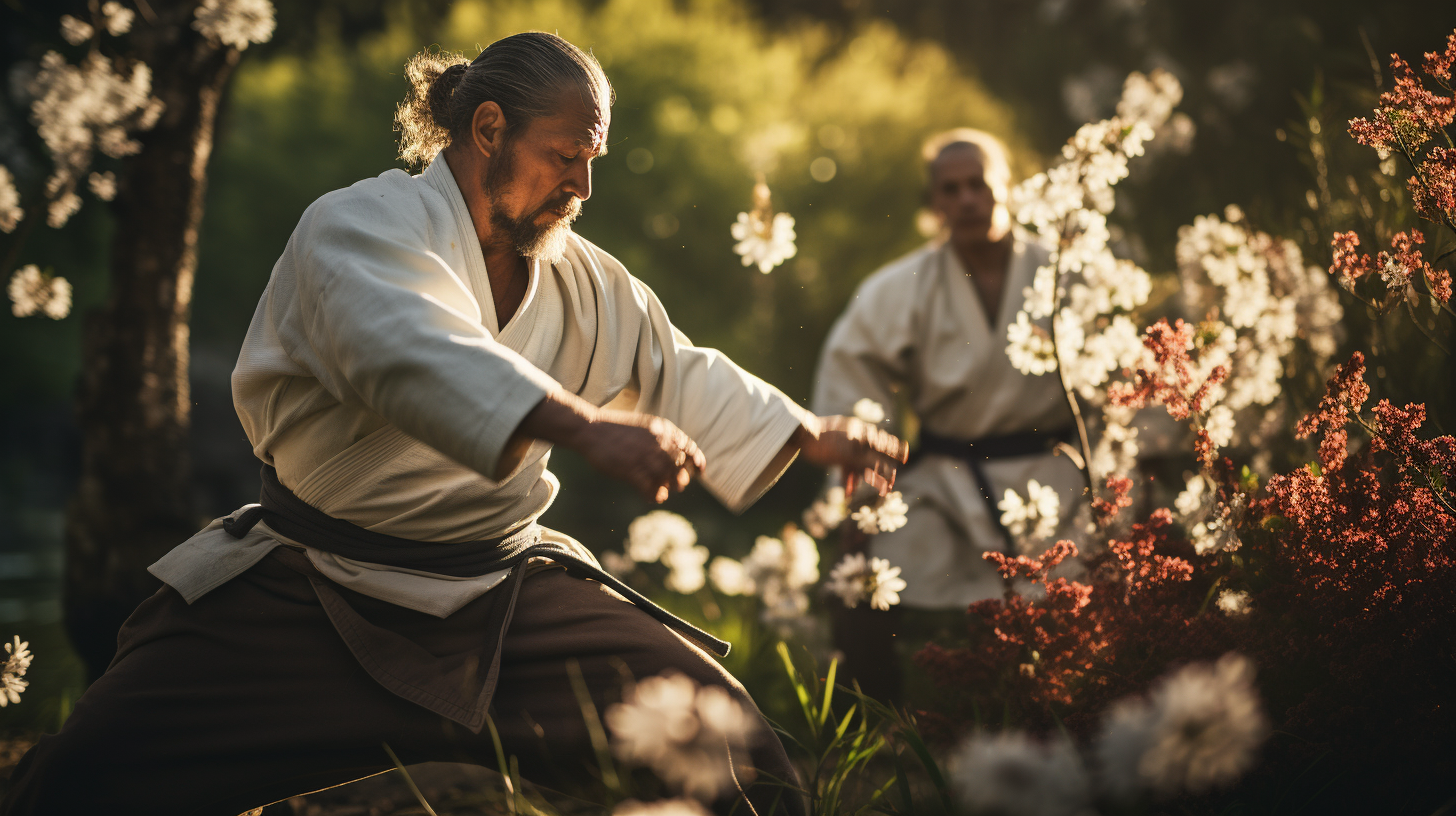
Aikido training incorporates unique aspects such as the roles of uke and tori, initial attacks and basic techniques, implementations of weapons, and training against multiple attackers in randori.
The Roles of Uke and Tori
In Aikido training, there are two fundamental roles: uke and tori. Uke is the attacker, while tori is the defender. The key principle in Aikido is to blend with the energy of the attack instead of opposing it.
Uke’s role is to initiate an attack with full commitment, creating a realistic scenario for tori to practice their techniques effectively. They provide a constant flow of energy that allows tori to learn how to redirect and neutralize the attack.

Tori’s role is to maintain control over the situation by utilizing precise timing, positioning, and technique execution. This dynamic interaction between uke and tori fosters a cooperative learning environment where both practitioners can develop their skills in a safe and controlled manner.
Initial Attacks and Basic Techniques

Aikido training involves a variety of initial attacks and basic techniques. These techniques are designed to effectively neutralize an attacker’s aggression while minimizing harm. Here are some key aspects of initial attacks and basic techniques in Aikido:
- Throws: Aikido techniques often involve throwing an attacker off balance and redirecting their energy. Throws such as irimi-nage (entering throw), tenchinage (heaven and earth throw), and koshinage (hip throw) are commonly practiced.
- Joint locks: Aikido emphasizes joint manipulation to control an attacker without causing significant injury. Techniques like ikkyo (first teaching), nikyo (second teaching), sankyo (third teaching), yonkyo (fourth teaching), gokyo (fifth teaching), and rokkyo (sixth teaching) are used to immobilize or force compliance.
- Strikes: While Aikido is primarily a non-striking martial art, it does incorporate strikes as part of its repertoire. Strikes can be used to create openings or distract the attacker momentarily, allowing for effective execution of throws or joint locks.
- Blending with attacks: A fundamental principle in Aikido is blending with the attacker’s movements rather than opposing them directly. By harmonizing with the energy and direction of an attack, a practitioner can effectively redirect it and maintain control.
- Kuzushi: Before executing a technique, breaking the attacker’s balance or kuzushi is crucial. This destabilizes the aggressor, making it easier to apply throws or joint locks successfully.
- Multiple attackers: Aikido training also includes scenarios where practitioners face multiple attackers simultaneously. Techniques like randori-suwariwaza (multiple attacker practice while seated) or randori-tachiwaza (multiple attacker practice while standing) help develop skills in handling multiple opponents effectively.
- Centering and grounding: Aikido techniques rely on proper body alignment, centering, and grounding. By maintaining a strong connection to the ground and aligning their center of gravity, practitioners enhance stability and power in executing techniques.
- Awareness and timing: Aikido emphasizes the importance of awareness and precise timing. Being aware of an attacker’s intentions and timing one’s movements accurately allows for effective execution of techniques.
- Practicing with different partners: Training in Aikido involves practicing techniques with partners of varying sizes, strengths, and skill levels. This helps develop adaptability, flexibility, and a deeper understanding of the techniques’ applications.
- Integration of weapons: Aikido training also incorporates the use of traditional Japanese weapons like the bokken (wooden sword), tanto (knife), and jo (staff). Techniques involving these weapons enhance understanding of distance, timing, and precision in technique execution.
Implementations and Use of Weapons

Aikido incorporates a weapons system involving the bokken (wooden sword), tanto (knife), and jo (short staff). Weapons training in aikido provides insight into the origin of techniques and reinforces concepts of distance, timing, and foot movement. Aikido techniques were originally designed to stop a samurai’s sword attack and can be used against attackers armed with clubs or sticks. Aikido techniques may result in joint locks, immobilizations, dynamic motions, or spectacular breakfalls. Aikido includes techniques performed in different directions and postures, such as standing, seated, and from both attacker and defender positions.
Training against Multiple Attackers and Randori
Aikido training goes beyond one-on-one scenarios, preparing practitioners to handle real-life situations where they may face multiple attackers. Through the practice of randori exercises, aikidoka develop their skills in dealing with multiple assailants simultaneously.
Randori challenges students to think and react quickly by blending and redirecting the energy of each attacker. This type of training helps practitioners enhance their spatial awareness, timing, and decision-making abilities while maintaining control over potentially chaotic situations.
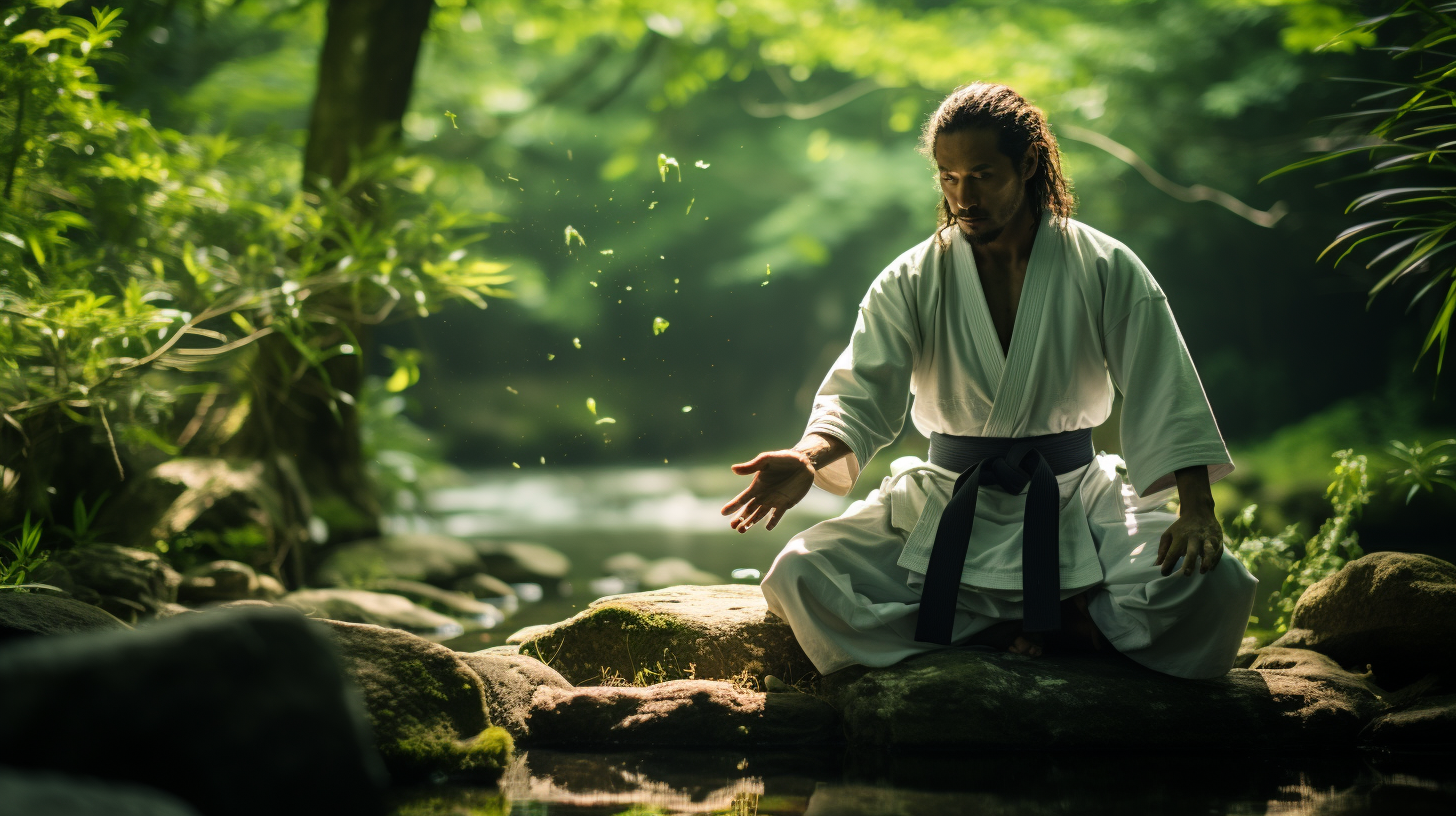
Aikido’s emphasis on flowing movements and efficient techniques proves invaluable when confronted with multiple opponents, making it a comprehensive system for self-defense in any scenario.
The Spiritual Component: Ki in Aikido
The spiritual component of Aikido is closely tied to the concept of “ki,” which can be defined as life energy or vital force. In Aikido, practitioners seek to cultivate and harness this inner energy to enhance their physical techniques and overall practice.
Ki training involves learning how to relax, center oneself, and move with calmness and fluidity.
Through dedicated practice, Aikido students develop a heightened awareness of their own bodies and the energy around them. They learn to sense the intentions of their training partners and respond accordingly, blending with the attack rather than resisting it.
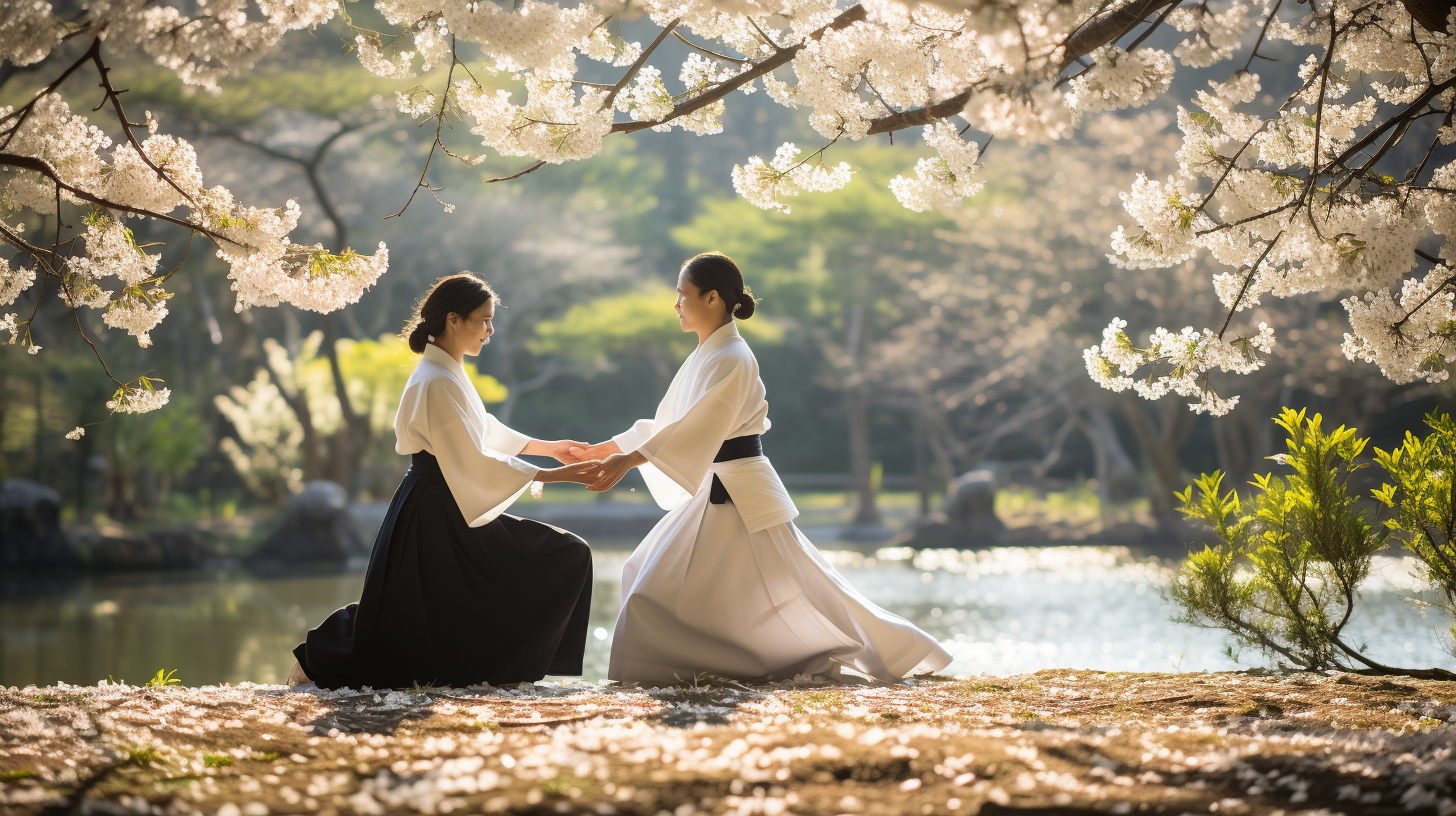
This emphasis on harmony and cooperation reflects the underlying philosophy of Aikido: that true victory lies in finding peaceful resolutions rather than engaging in conflict.
Moreover, ki training extends beyond physical movements; it also encompasses mental focus and control. Through meditation exercises and mindful breathing techniques, Aikido practitioners cultivate a calm mind and deepen their connection with their inner selves.
This mental discipline helps them stay centered during dynamic situations both within the dojo walls and in everyday life.
In summary, the spiritual component of ki plays an integral role in Aikido practice. By cultivating this life energy through physical techniques, mindfulness exercises, and harmonious interactions with others, practitioners aim to not only improve their martial skills but also nurture personal growth on a deeper level.
The Physical Aspect: Fitness in Aikido
Aikido training goes beyond just honing martial skills – it also focuses heavily on physical fitness. Through regular practice, practitioners develop improved balance, flexibility, and endurance.
The controlled movements and joint techniques in Aikido require precise coordination of the body, helping to enhance overall athleticism. Moreover, Aikido emphasizes correct joint movement, which helps maintain physical well-being and reduces the risk of injuries.
This comprehensive approach to physical fitness not only strengthens the body but also contributes to mental relaxation under stress. By incorporating various exercises and techniques into its training regimen, Aikido offers a holistic approach to improving one’s physical attributes while promoting overall wellness and resilience.
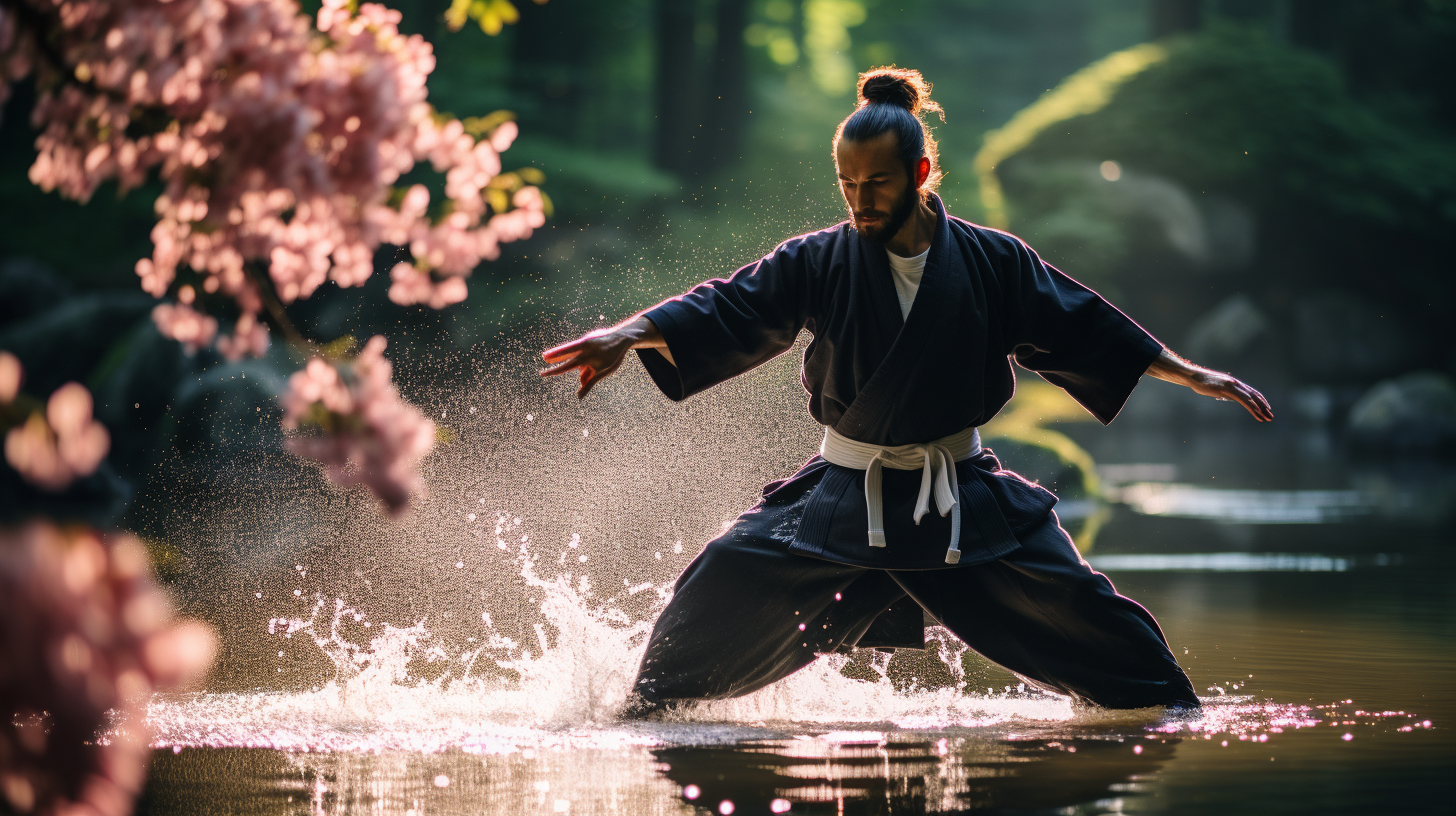
In addition to its focus on joint movements and precision, Aikido training incorporates other elements that promote fitness. Practitioners engage in dynamic stretching exercises that improve flexibility while conditioning their muscles for optimal performance during techniques.
The emphasis on timing and reaction time further enhances agility and reflexes – crucial aspects not only for self-defense but also for everyday life situations. Furthermore, blending with the attack and redirecting its energy requires core strength development along with quick footwork execution.
Overall, fitness in Aikido is not just about building strong muscles or obtaining cardiovascular endurance; it encompasses a comprehensive approach that hones all aspects of physicality needed for effective technique execution while developing an integrated mind-body connection vital for personal growth both on-and-off the mats
Avoiding Injuries in Aikido Practice
To ensure a safe and injury-free Aikido practice, it is essential to follow proper techniques and precautions. Here are some ways to avoid injuries:
- Focus on proper warm – up exercises before starting the training session.
- Practice good posture and body alignment to prevent strain on joints and muscles.
- Always listen to your body and know your limits. Avoid overexertion or pushing yourself too hard during training.
- Maintain a relaxed state of mind and body throughout the practice. Tension can lead to injuries.
- Use proper ukemi (falling) techniques when being thrown or performing throws. This helps absorb impact and protect your body from injury.
- Pay attention to proper technique execution, including proper footwork, hand placement, and body movement. Sloppy form can increase the risk of injury.
- Communicate with your training partner and establish a mutual understanding of intensity levels during practice sessions.
- Avoid applying excessive force or strength during techniques. Aikido emphasizes the use of timing, balance, and leverage rather than pure physical power.
- Take breaks as needed during long training sessions to rest and recover.
- Stay hydrated before, during, and after practice to prevent dehydration, which can affect performance and increase the risk of injury.
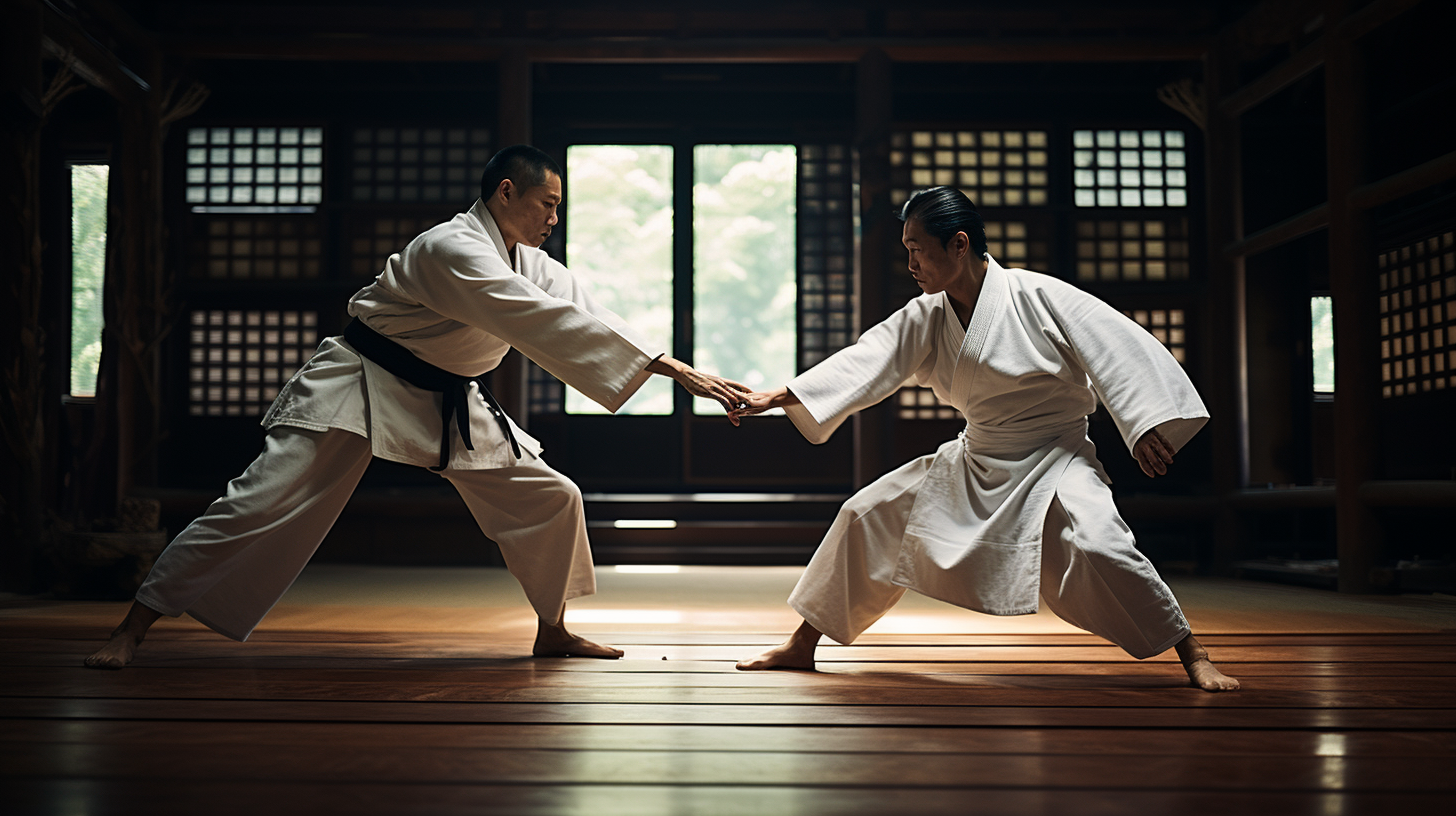
Mental Training in Aikido
Mental training is a crucial aspect of Aikido practice, aiming to develop a focused and calm mind. In Aikido, practitioners learn to cultivate mental relaxation and perform techniques confidently even in high-stress situations.
This mental aspect is just as important as the physical aspects in achieving mastery of the art.
One key component of mental training in Aikido is the study of “ki.” Ki represents the flow of energy within oneself and extends outward to connect with others. By learning to harness and control their ki, practitioners can achieve a state of harmony with their surroundings.
This not only enhances their performance in executing techniques but also helps them maintain a centered mindset in challenging situations.
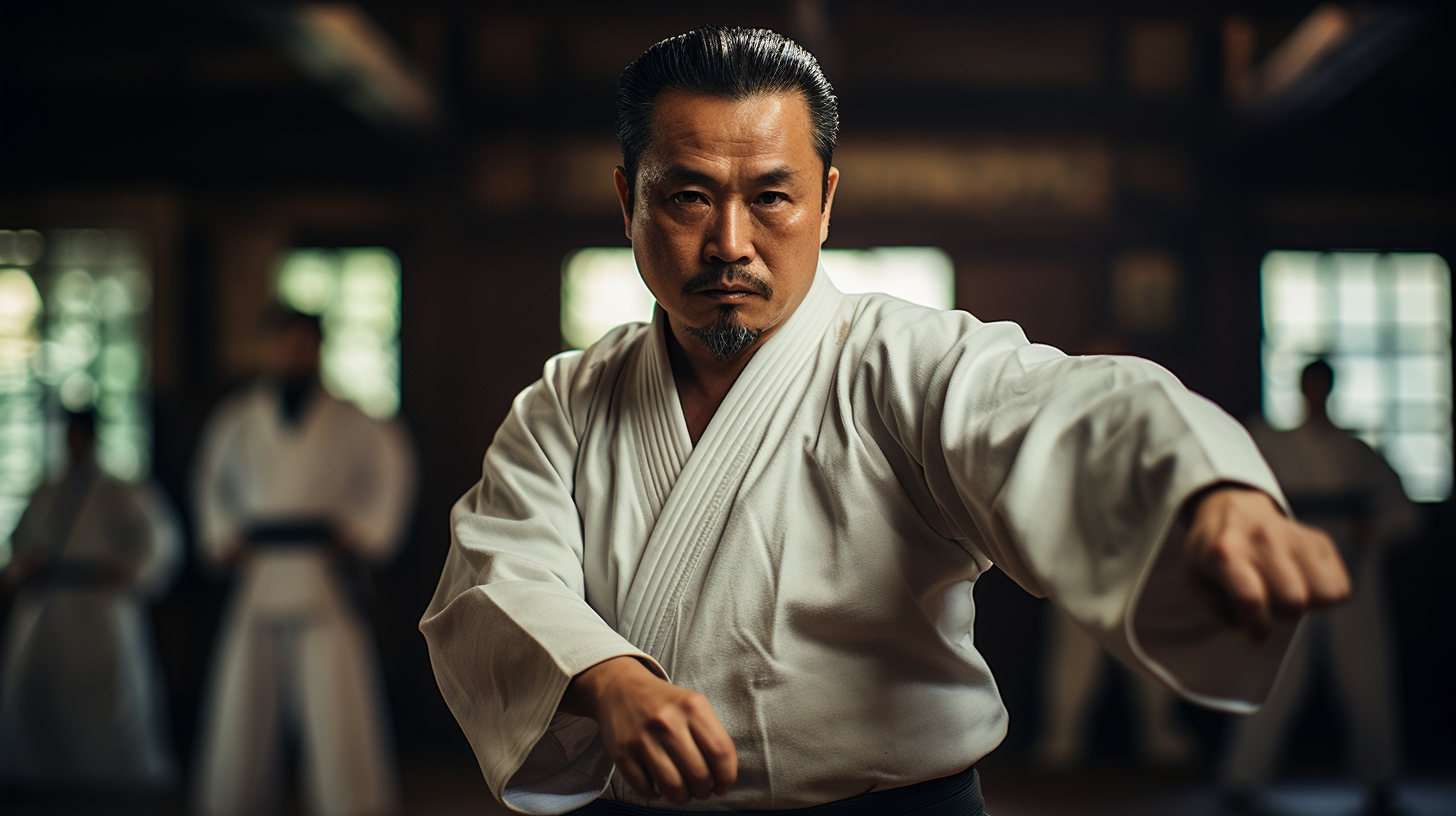
Furthermore, Aikido’s emphasis on mental training goes beyond the physical techniques themselves. Practitioners are encouraged to develop qualities such as awareness, empathy, and compassion towards others.
These attributes not only benefit interactions within the dojo but can also be applied outside of martial arts practice, enabling practitioners to navigate conflicts with greater understanding and peaceful resolution.
In summary, mental training plays an integral role in Aikido practice by fostering mental relaxation, developing control over one’s ki energy flow, and cultivating qualities like awareness and compassion.
Through this holistic approach to martial arts training, practitioners gain both physical prowess and valuable life skills that extend far beyond self-defense techniques alone.
Uniforms and Ranking in Aikido
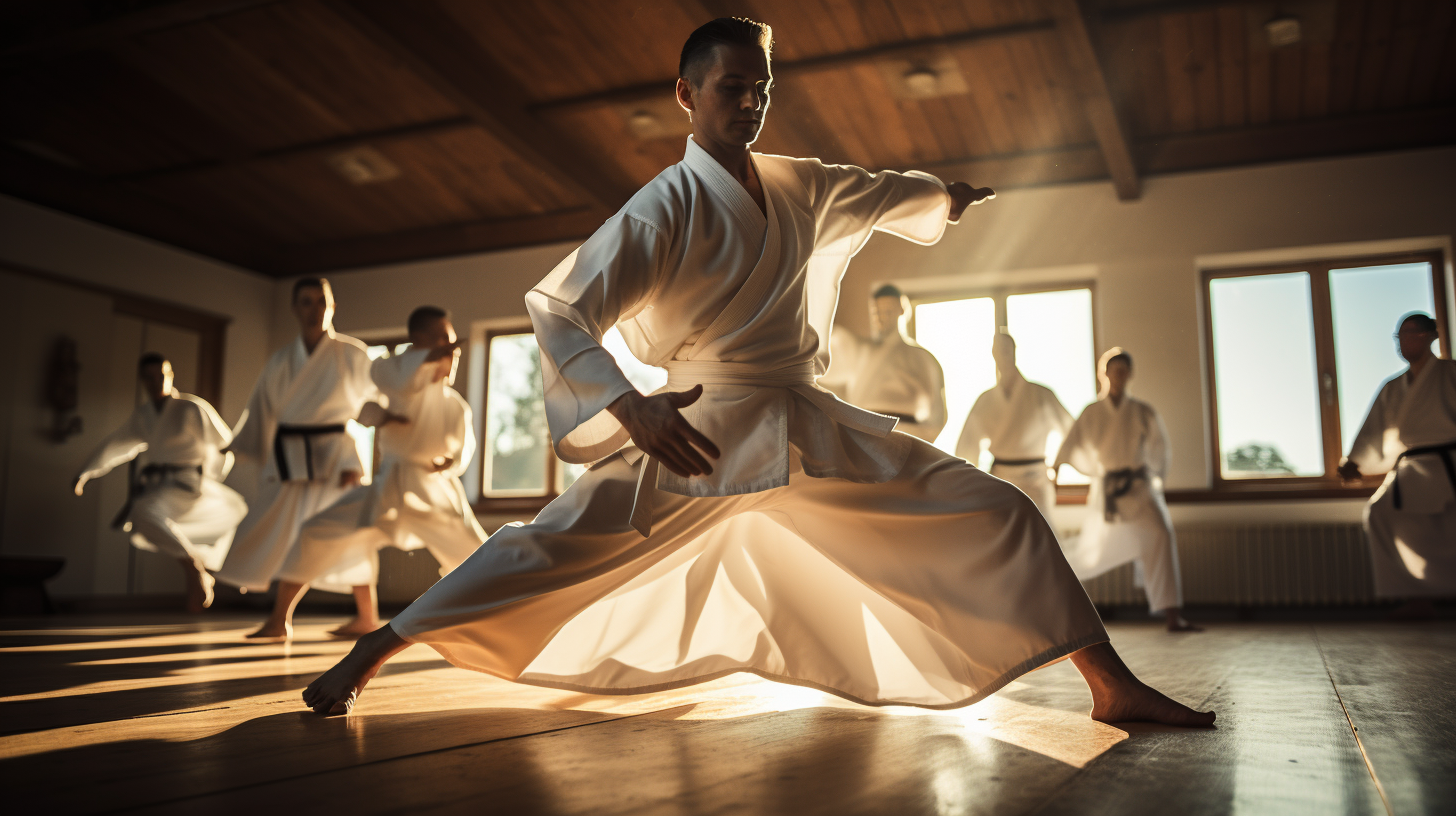
Uniforms and ranking systems in Aikido have special significance and varying interpretations within different organizations. The uniform, or “aikidogi”, consists of white trousers and a wraparound jacket and sometimes includes a wide-pleated trouser called “hakama”. Rankings, on the other hand, are classified as “kyu” and “dan” grades, with belts distinguishing different ranks among practitioners.
| Uniforms | Ranking |
|---|---|
| The uniform worn for practicing Aikido is known as “aikidogi”. | Aikido follows a grading system with ranks called “kyu” and “dan”. |
| Aikidogi comprises white trousers and a wraparound jacket. | Belts are used to distinguish between different ranks in Aikido. |
| Aikido-specific tops with shorter sleeves are also available. | The requirements for testing and ranking vary among different Aikido organizations. |
| The wide pleated trousers, “hakama”, are often worn in Aikido. | Some dojos enforce age requirements for taking the dan rank exam. |
| Some schools reserve hakama for practitioners with dan ranks or instructors. |
Different Styles of Aikido
Aikido has evolved into a number of different styles over the years, each with its unique characteristics and techniques. Below is a brief overview of some major styles:
| Style | Description |
|---|---|
| Aikikai Aikido | Aikikai is the style taught directly by the founder and is the largest Aikido organization currently under the control of the Ueshiba family. |
| Iwama Ryu | Iwama Ryu focuses on the integration of empty-handed techniques and weapons training, promoting the unity of body and spirit. |
| Shin Shin Toitsu Aikido | Also known as Ki Aikido, this style emphasizes the concept of “Ki” or “life force energy” and its use in techniques. It seeks to achieve harmony between mind and body. |
| Shudokan Aikido | Shudokan Aikido emphasizes practical self-defense techniques and quick movements. It is known for its dynamic and powerful techniques. |
| Yoshinkan Aikido | Yoshinkan Aikido is a style that emphasizes the basics and fundamentals of Aikido. It follows a rigid training curriculum and is known for its systematic instruction method. |

Each style of Aikido contributes to the comprehensive system of this Japanese martial art. While the core principles remain the same, the different styles offer varying perspectives and training methodologies.
Aikido and Self-Defense: How They Relate
Aikido is often recognized as a highly effective martial art for self-defense purposes. Its techniques, which involve throws, joint locks, and strikes, allow practitioners to defend themselves against various types of attacks.
Aikido training teaches individuals how to blend with an attacker’s energy and redirect it in a controlled manner. This allows them to neutralize the attack without relying solely on brute force or aggression.
What sets Aikido apart from other martial arts is its emphasis on non-lethal techniques and conflict resolution. Instead of causing harm to an attacker, Aikido practitioners strive to subdue them while minimizing injury.
This approach aligns with the philosophy of harmony and peaceful resolution found at the core of Aikido.
Whether faced with single-handed grabs, kicks, punches, chokes, or even multiple attackers, Aikido provides practical self-defense techniques that can be adapted to different situations.
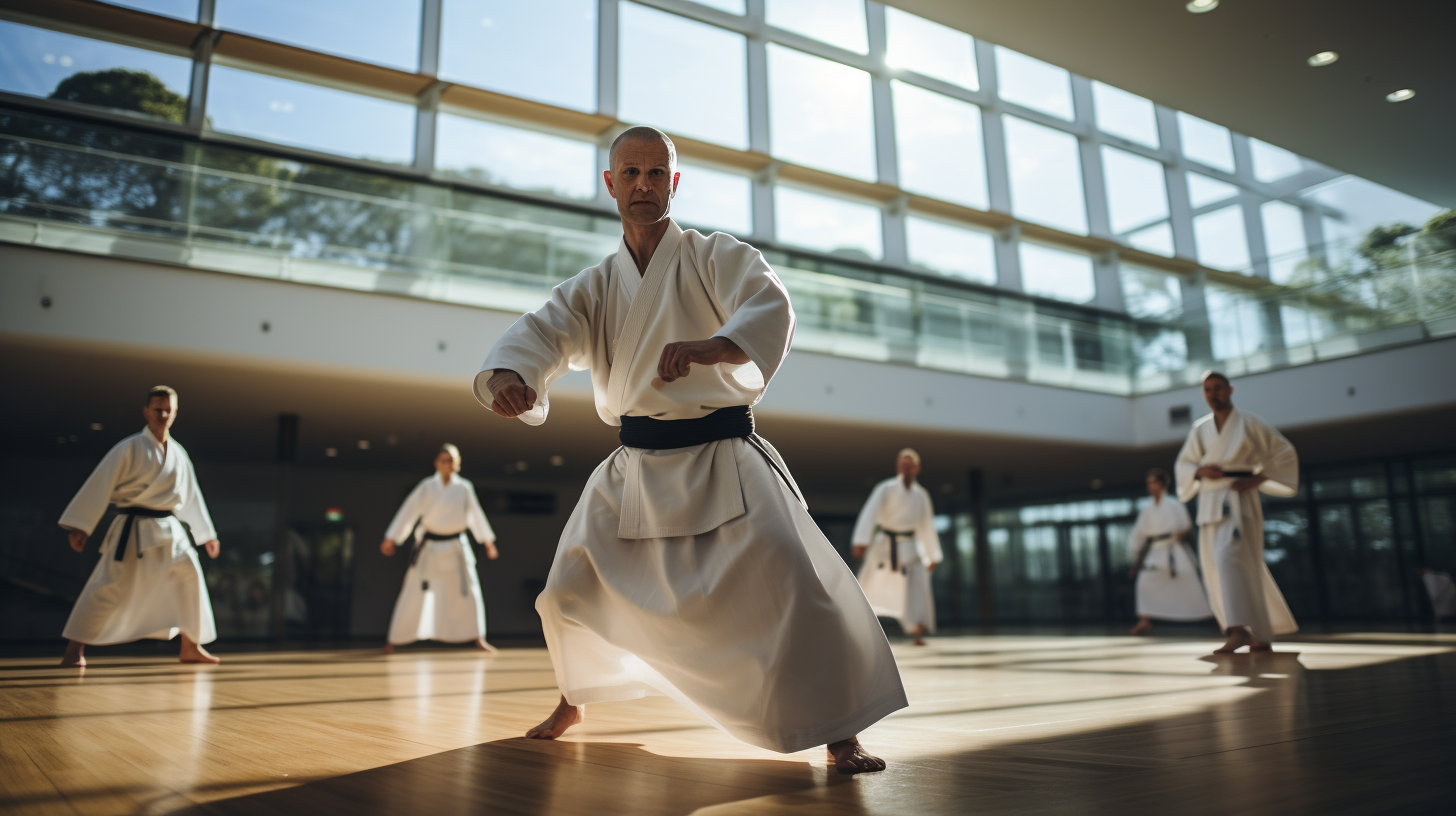
The comprehensive nature of Aikido training ensures that students are well-prepared for real-world encounters and enhances their overall confidence in handling potential threats.
In conclusion, Aikido offers a unique approach to self-defense by focusing on blending with an attacker’s energy rather than meeting force with force. Through mastering the principles and techniques of this Japanese martial art, individuals can effectively protect themselves while promoting peace and harmony in potentially violent situations.
Getting Started in Aikido: Steps to Begin Training
To begin training in Aikido, follow these steps:
- Find a reputable Aikido dojo or training center in your area.
- Contact the dojo to inquire about class schedules and any beginner – specific programs they offer.
- Attend a beginner’s class or orientation session to learn more about the art and get a feel for the training environment.
- Start with regular attendance and commitment to consistent practice to progress effectively.
- Invest in appropriate training attire, such as a gi (uniform) and comfortable footwear suitable for indoor use.
- Familiarize yourself with the basic etiquette and customs observed in Aikido dojos, including bowing and showing respect to instructors and fellow practitioners.
- Begin learning the fundamental movements, such as ukemi (falling safely), basic stances, and footwork.
- Practice blending exercises with a partner to develop sensitivity and coordination.
- Learn basic techniques like ikkyo, nikyo, sankyo, shihonage, and iriminage under the guidance of an experienced instructor.
- Emphasize proper breathing techniques (kokyu-ho) to improve control and relaxation during training.
- Gradually increase your involvement by attending seminars, workshops, or special events organized by your dojo or affiliated organizations.

Aikido Organizations: Understanding the AAA and its Affiliations
The Aikido Association of America (AAA) is an influential organization that promotes the practice of Aikido in the United States. With a focus on strong technique, clear teaching methods, and standardized testing requirements, the AAA ensures high-quality instruction for its affiliates.
They offer training seminars and camps as well as instructor certification programs to help maintain these standards.
By affiliating with the AAA, Aikido dojos gain recognition and credibility within the Aikido community. The process involves sending an official letter expressing a request for affiliation.
The AAA provides resources and support to its affiliated dojos and instructors, fostering a sense of connection among practitioners.
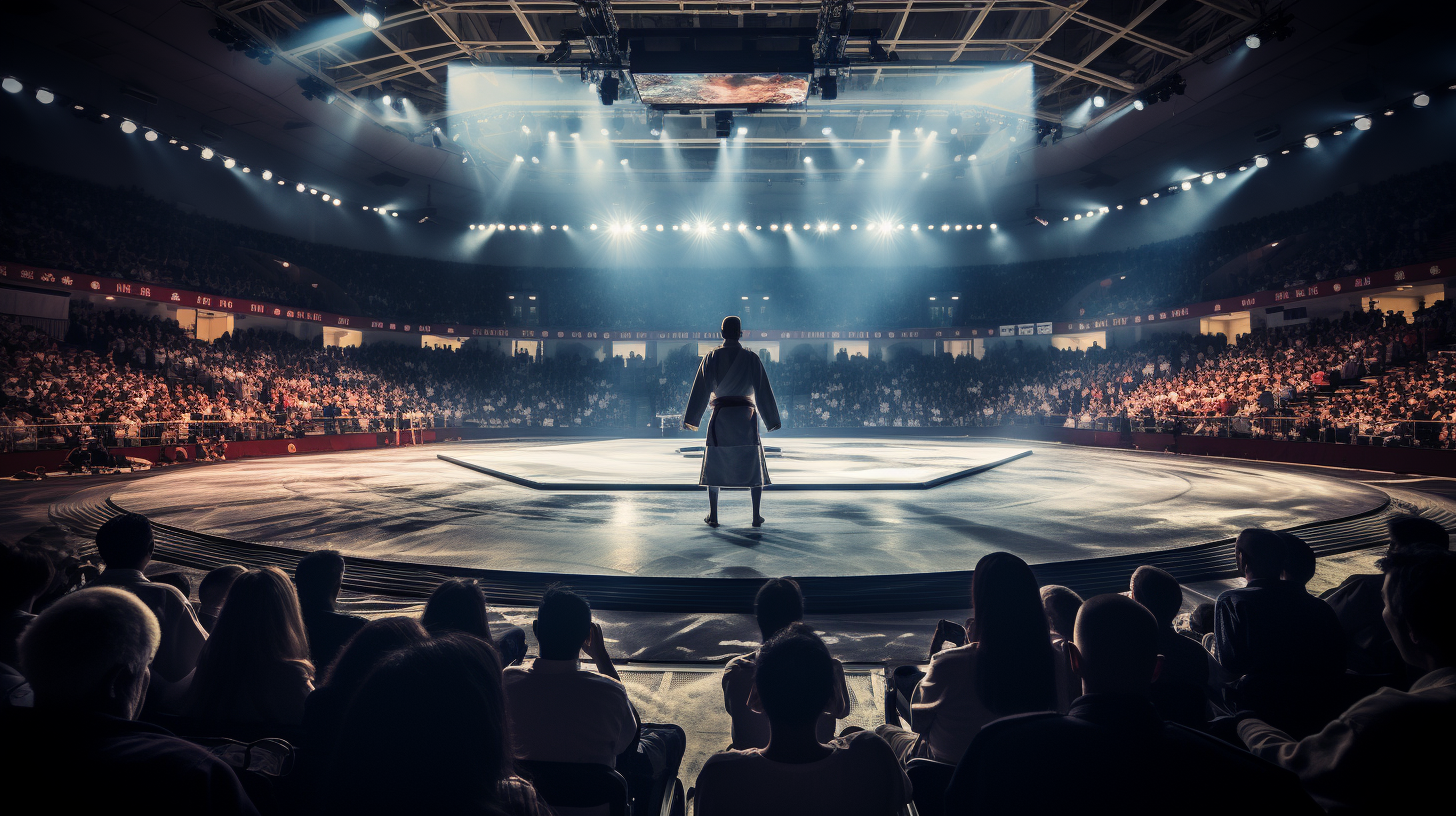
As part of its commitment to preserving the integrity and tradition of Aikido, the AAA takes pride in upholding principles taught by Morihei Ueshiba, the founder of Aikido. Understanding the role of organizations like AAA can greatly benefit anyone interested in delving deeper into their study and practice of this comprehensive Japanese martial art.
Conclusion
In conclusion, Aikido is a comprehensive system of Japanese martial arts that offers a unique approach to self-defense and personal development. With its emphasis on blending with the energy of an attack rather than meeting force with force, Aikido promotes harmony and non-violence.
Through dedicated training in techniques, physical fitness, mental discipline, and spiritual growth, practitioners of Aikido can cultivate a balanced and peaceful way of life. Whether you’re interested in self-defense or seeking personal transformation, Aikido provides a holistic path towards achieving your goals.
Start your journey today and discover the power of this ancient art form.
Frequently Asked Question about Aikido
What is Aikido?
Aikido is a comprehensive system of martial arts that originated in Japan. It focuses on using an opponent’s energy and movements against them, rather than relying solely on brute force.
What are the key principles of Aikido?
The key principles of Aikido include blending with your opponent’s energy, redirecting their force, and utilizing circular motions to maintain balance and control during techniques.
Is Aikido suitable for self-defense?
Yes, Aikido can be effective for self-defense as it emphasizes the use of techniques that neutralize an attacker without causing excessive harm. The focus is more on controlling and immobilizing opponents rather than inflicting injury.
Can anyone practice Aikido, regardless of age or fitness level?
Yes, Aikido can be practiced by people of all ages and fitness levels. It does not require extreme physical strength or flexibility but instead relies on proper technique and understanding of body mechanics to execute movements effectively.
